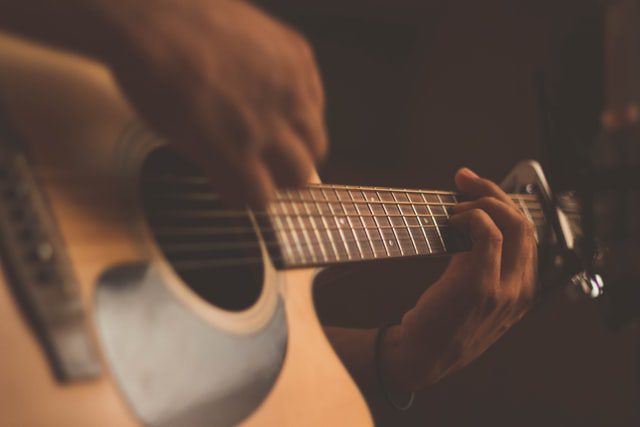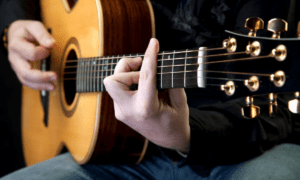There’s no better feeling than learning how to successfully play an instrument. Many people attempt to learn to play the guitar at least once in their life but it’s a common occurrence for people to give up after only a matter of weeks or months.
Having weekly guitar lessons with a specialized tutor can be costly and frustrating if you aren’t seeing lots of immediate progress. Thankfully, it is possible to teach yourself at home – on your terms.
If you want to begin playing the guitar, look no further! This guide will provide you with everything you need.
Notes Of The Guitar
You’ll find it impossible to learn the instrument without the knowledge of the notes of each string. With standard turning with a 6-string guitar, such as prs guitars, strings are given a name and a number.
- The 6th string is the thickest string on a standard 6-string guitar. It is tuned to E with standard tuning and is also nicknamed the Low E String. This is the deepest note you can play on a guitar.
- 5th String is known as the A String and is tuned to
- 4th String is the D string, tuned to the D note.
- 3rd String is called the G String as it is tuned to the note
- 2nd String is the B String as it was tuned to
- The 1st String is tuned to the E note. This is the thinnest string on a guitar and is typically referred to as the High E String.
Important Guitar Anatomy
There are some parts of the guitar that you must familiarize yourself with. This includes:
The Fretboard – the space where you press your fingers to play different notes and chords.
The Bridge – where all of the strings on the instrument are held in place. They’re usually fixed to the bridge.
Machine Heads – the headstock can be found at the top end of the guitar. Here, you can find the tuning pegs (or machine heads) that are great for lowering and raising the pitch of different strings. Making adjustments to these is what keeps your guitar in tune.
How To Remember The Names Of Strings
There are a few simple mnemonics out there to remember the order and names of the strings. But you can try this one first:
Elephants
And
Dynamite
Grow
Big
Ears
What Is The Difference Between Notes And Chords?
- Notes can be thought of as letters. They are solitary pitches on the guitar. If you pluck a single string, this is what you will hear.
- Chords can be thought of as words. These are groups of notes that are played simultaneously.
There are many notes to learn on the fretboard. This can often feel overwhelming for beginners everywhere and is usually what forces people to cease learning the instrument.
And, when fretting chords, make sure to use the tips of your fingers. This allows maximum space between each of the strings — allowing the notes to ring clearly without being deadened or muffled by your unwanted fingers.
How To Strum A Guitar
Chords and notes are very important but strumming is where everything truly begins to come to life! Developing a rhythmic and strong strum will make you stand out. It will also help you to learn how to play a variety of different songs.
You can use a pick or your fingers to strum a guitar. However, as a beginner, you should opt to hold a pick.
Make sure to hold it between your thumb and first finger, tuck your other fingers in, hold the pick inwards, and keep your wrist straight — running parallel with the neck of the guitar. The pick should be aimed at the strings.
Keep Your Posture Straight
1) Don’t Slump
Putting your body into this position restricts a lot of your movement and makes playing the guitar ar more difficult.
2) Don’t Sit In A Chair With Arms
This also restricts your movement and forces you to ensure your left elbow is tucked against your torso, which isn’t ideal for playing the guitar! Your left arm must be free of all obstructions.
3) Don’t Sit On A High Stool
Sitting on such a high seat forces your thighs to slope downwards which will make the guitar slip from your grip as you play. Low stools are great for playing the guitar.
Summary
Provided you familiarize yourself with the different parts of the guitar, strumming patterns, and learn some basic chords, you’ll make an excellent start to your guitar playing journey.

































